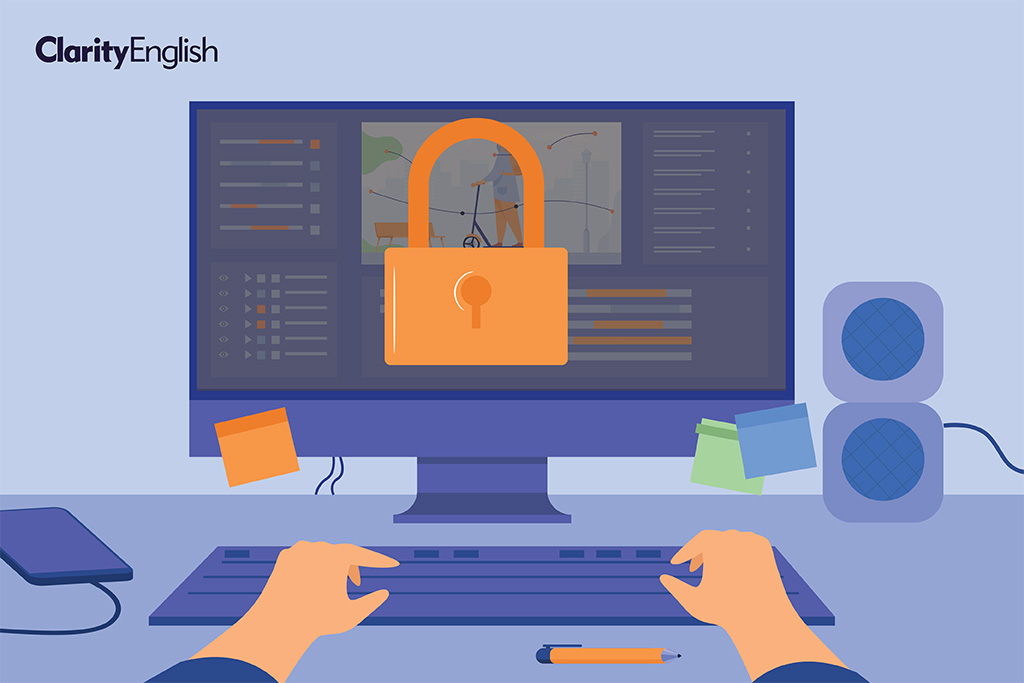Every cent, penny or yen that you spend on learning resources needs to be reflected in usage. Higher usage means greater returns for the students and institution, right? Caledon Public Library in Canada purchased 20 anonymous access licences for their users. Imagine their delight when their usage shot up 200%. But after some scrutiny, they became a little suspicious. Could they be sure it was their members behind the surge?
What is an Anonymous Access licence?
With an Anonymous Access (AA) licence, you purchase access for a number of concurrent users. If your licence is for 25 learners and 25 people are already using the program, the 26th person will see a message saying that the licence is currently full. As soon as one person exits the program, a licence slot becomes free again.
Learners can run the program without identifying themselves – a guest access. Anything they do is forgotten (by the computer, hopefully not by them) when they close the program. Or learners can create a personal account for themselves. When they sign in using these details, the program will keep track of their progress across sessions. But only they can see this progress, it is not available in any reports.
What needs protecting?
Given the nature of the guest access and self-registration of personal accounts, an AA licence could be used by anyone. The institution that paid for the licence might find their own users always locked out by people who found a link and just started using it. Protection is the way we can stop this happening, without making it too hard for the target users to get in. Here are four ways you can protect your AA licences.
1. Institutional website
Most schools and libraries have a website with promotional information on some pages and then a student or patron section that you only see when you sign in. If you can add a link to the ClarityEnglish programs in that section, then we can stop anyone running the program if they didn’t start from that private webpage. This is based on a referrer: you tell us the page or pages that can start the program and we add it as a filter on the program. It’s simple to set up, but also the easiest approach to hack.
2. IP protection
Every computer / device connected to the internet has an IP address which tells websites, like ClarityEnglish, something about where visitors come from. We can use this to enable access from certain physical locations, such as classrooms or a building. You tell us the IP address, or range of addresses, of your locations and we add that as a filter on the program. If you are accessing from a device somewhere else, you are blocked. Once you have found out the IP addresses, this is a very simple filter. However, one of the advantages of elearning is that you can do it anytime, anywhere. This approach locks that down and can be restrictive to learners…
3. IP proxy
This is an evolution of the first two approaches. You sign into a website, typically a library website, from home. You use the username and password that the school or library gave you. Once in, an IP proxy sits between your device and any links you click from the website. When you click a link to Tense Buster, the program thinks that your IP is the library’s one. Your real device IP is hidden. This means that we can filter out everything except the proxy’s IP and you can still access the program from home. The most common version is called EZproxy, and provides the website with a database of resources, that are all protected, and easy to update if necessary.
4. Clarity portal
If you have no school or library website, or no way to update it, then a customised Clarity portal can help. You can enter a webpage that lists all the programs you have subscribed to. The learner clicks on a link to enter the webpage and is then asked for a pattern based ID. Libraries typically call this a barcode pattern. Or schools might have a student ID with a ‘2022R’ at the beginning of all of this year’s cohort. The learner types their ID and Clarity matches it against the pattern. If it fits, the learner can start the program.
Conclusion
You may find that one or a combination of these protective measures works best for your institution. Caledon Public Library uses both an IP proxy and a Clarity portal. This dual protection helped them figure out the reason behind the 200% increase in usage. They found that all the new accounts on their licences were following a pattern of email and password. It looked like one person perhaps creating accounts for all their friends or classmates. Because of the combined protection, even if one person was driving this, all the users had to go through the library website and be members. In the end, reasonable protection and a lovely surge in use.

